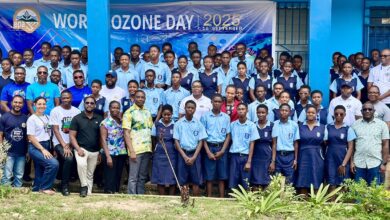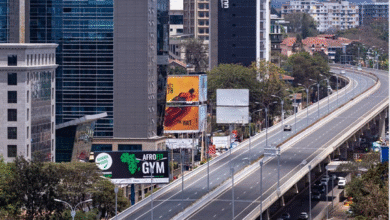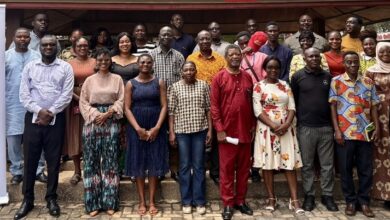Final-Year AUCB Students Use Social Media and Tree Planting to Drive Environmental Change
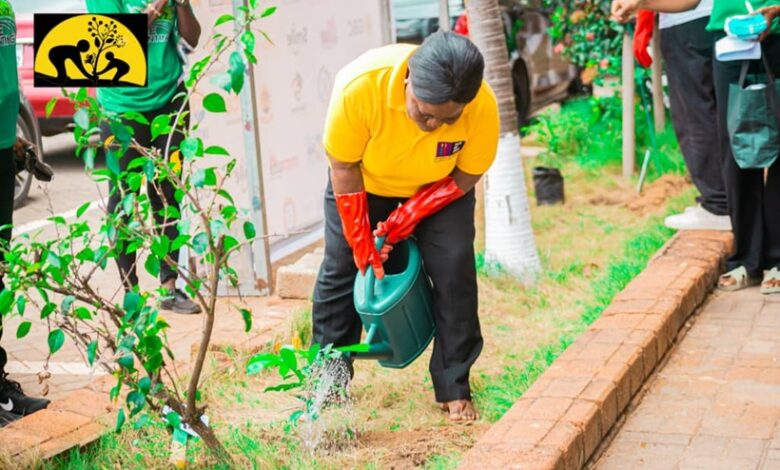
In a spirited move to champion environmental sustainability, three final-year Development Communication students of the African University of Communications and Business (AUCB) have launched a tree planting exercise as part of their capstone project titled: “Social Media Campaign for Environmental Conservation: Promoting Tree Planting in Adabraka.”
The initiative, spearheaded by Victoria Igmatu Ackah Amo, Lydia Naa Korkoi Otoo, and Millicent Adoko seeks to create awareness on urban afforestation and encourage community participation in environmental sustainability.
The campaign was launched on the university campus and its immediate surroundings, with support from various stakeholders including the university’s leadership, local authorities, and the traditional council.

Speaking at a briefing prior to the tree planting exercise, President of AUCB, Professor Abeeku Blankson, praised the students for embracing the university’s new project-based learning model for final year students.
“It was three years ago we decided to stop the old ways and mandated that every student at level 400 be part of a group that undertakes a practical project. It’s not just about planting trees. There’s an academic process — they must research, write and defend proposals, implement their ideas, and write impact reports,” Prof. Blankson explained.
He stated that the projects are designed not just for academic credit but to foster real-world solutions and inspire entrepreneurship. “They can even go on to form environmental NGOs out of these projects and secure both local and international support. That is the essence of education to me,” he added.
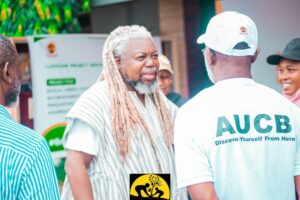
The coordinator and supervisor of the tree planting project, Mr. Nana Sandy Achampong, elaborated on the academic and practical scope of the campaign.
“We’ve adopted a capstone approach for project work that focuses on practical applications and identifying community needs. This campaign started with 30 trees planted around the AUCB campus and surrounding areas, with support from the local assembly and Parks and Gardens,” he said.
Mr. Achampong noted that although the campaign includes physical tree planting, its core is a social media advocacy aimed at inspiring wider participation in tree planting and environmental stewardship. “This is one of the demonstrative parts. The students are using storytelling online to encourage others to replicate the initiative.”
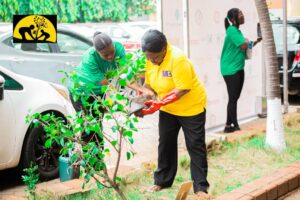
The Queenmother of Adabraka, Mrs. Naa Korkor Aadizeoyi, who also took part in the planting exercise, commended the students for the initiative and offered practical advice on making tree planting more meaningful and sustainable.
“Often, we just plant trees without knowing why. But every tree has value — some for food, some for oxygen. In my house, I grow mango, banana, pawpaw, and even vegetables. It’s all about strategy. Everyone can grow something, no matter how small their space,” she said, urging students and residents to “plant with purpose.”
The exercise, which saw all speakers including Prof. Blankson and the Queenmother physically plant trees, was also supported by the Assemblyman for Adabraka Electoral Area, Mr. Benjamin Washington. The planted trees were numbered to aid in monitoring and nurturing, ensuring sustainability beyond the event.
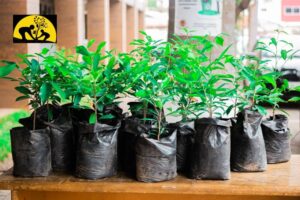
The project is part of AUCB’s efforts to redefine education by blending academic research with community impact. The institution hopes that such initiatives will equip students with the skills and mindset to become agents of change in their communities.
As the students continue their online campaign, they are also gathering stories, testimonials, and progress updates to share across platforms — driving home the message that environmental conservation starts with a seed, and everyone can plant one.

